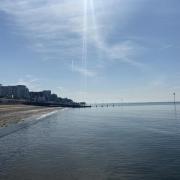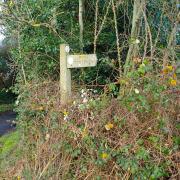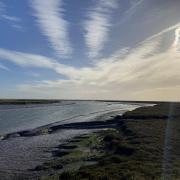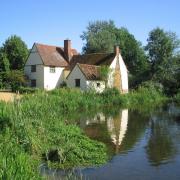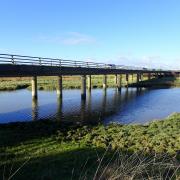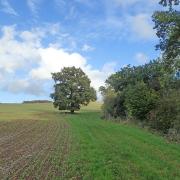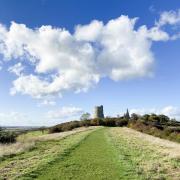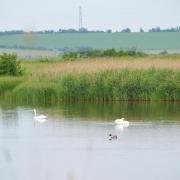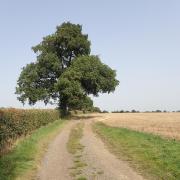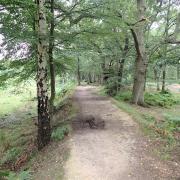By Ros Green
Join Essex Book Festival on a journey into the unexpected this summer, with extraordinary walks taking in asylums, witch trials and world-famous artists
Forget those 10,000 daily steps. The ‘Peasant Poet’ John Clare’s long walk home from the once-famous High Beach Asylum in Epping Forest (where multitudes of rich patients were treated in the 19th century) to his beloved birthplace, the village of Helpston in Cambridgeshire, notched up a remarkable 195,360 steps. Give or take a few. It was a walk that inspired Clare’s seminal prose work, Recollections of Journey from Essex, a fascinating account of both his escape from the asylum, and the experiences of a person living with mental illness in the mid-1800s.

Despite his impoverished childhood – Clare started life as ploughboy, then reaper, thresher and pot-washer, before turning his pen to poetry – he swiftly ascended the literary ladder to become one of the best-loved poets in English literature. However, as a result of his declining mental health over a number of years, Clare was admitted to High Beach Asylum in 1836, where he spent his days wandering in the grounds and writing his poetry. Five years later, desperate to be reunited with his family, he walked out of High Beach, and he didn’t stop walking until he reached them four days later.
This remarkable story – and walk – are the inspiration for the first in this year’s series of artist-led IN MY STEPS: RADICAL WALKS, which will be taking place across Essex from May onwards as part of Essex Book Festival’s extended programme of summer events.
Poet and writer Robert Hamberger will be leading fellow walkers on a three-hour hike through Epping Forest, circumnavigating the High Beach Asylum site, exploring some of the areas in the forest where Clare walked and composed his poems, and finally, reading extracts from his memoir: A Length of Road: Finding Myself in the Footsteps of John Clare. That’s 21,000 steps by our estimate, including a picnic break in the middle. Not bad for a day’s walk.
Festival Director Ros Green explains the thinking behind IN MY STEPS: RADICAL WALKS IN ESSEX. ‘It all began in 2021. When we started planning last year’s festival programme, we had no idea what would be happening in terms of Covid-19 restrictions. What we did know was that everyone was spending more time outdoors than ever before.
‘Walking has always inspired writers. You only have to think of Wordsworth and his passion for the Lake District, through to Robert MacFarlane’s The Old Ways, A Journey on Foot. There is something very special about following in a writer’s footsteps, and even more special when your guide is a writer or artist themselves.
‘As for the ‘Radical’ part. Essex Book Festival is a huge supporter of the Radical Essex Project. Set up by Focal Point Gallery in Southend to challenge some of the Essex stereotypes – we all know what they are – the project seeks to tell another story of Essex. One that explores the less-known innovations and creations of this fabulous county. All of our ‘Radical Walks’, which are being hosted in partnership with Focal Point Gallery, touch on some piece of Essex ‘magic’; some story that should be told, or in this case, walked.’

Another one of Essex Book Festival’s ‘Radical Walks’ is being led by walking aficionado Peter Aymler, author of Essex Walks and numerous other walking guides. Peter has climbed many hills and walked many long-distance paths all over Britain, and is equally at home in a tent or bothy in the Scottish Highlands as he is in a nature reserve in some unconsidered London suburb. Most importantly, he relishes the surprise on people’s faces when he tells them that some of his favourite walking is in Essex.

Unlike Robert’s lyrical forest hike, Peter will be leading fellow walkers through the heart of Harlow’s New Town, taking in Harlow’s impressive Sculpture Trail, including work by the likes of Henry Moore, Auguste Rodin and Barbara Hepworth, en route.
‘It will be an ode to a disrespected town,’ Peter explains. ‘Harlow’s master planner, Frederick Gibberd, planned a town with great understanding of the lie of the land, exploring the country on bike and foot before laying pen to paper. He facilitated those modes of transport by creating car-free corridors for walkers and cyclists that still underpin the layout of the town today, and which we'll use for much of the Book Festival walk.’

‘At another level, his deep commitment to the value of the arts led to public sculpture, across the town, becoming imbedded in its fabric. Thankfully, it's a heritage that endures, and we'll see some of the core works and look at how they relate to their settings.’
‘But there are challenges too. Harlow suffered greatly when key industries closed; housing standards have been deliberately compromised, and new developments, with associated infrastructure, could severely damage Gibberd's vision. We'll talk about that as we go around too.’

Other ‘Radical Walks’ include a walk around the Bata Estate and Tilbury Marshes with architect Emma Twine. Starting at Easy Tilbury Library, the walk will include a visit to the Bata Heritage Centre to see the archives of this modernist working town, considered one of the most important planned landscapes in the East of England in the 20th century, before exploring the flat top housing estate and factory buildings, and nearby marshlands.

And finally, there’s ‘Othered in a region that has been historically Othered’ led by Elsa James and Syd Moore. Here, artist Elsa James will be joined by novelist and activist Syd Moore to lead a guided walk from Mistley to Manningtree, the setting of the county’s famed witch hysterias, which are mentioned in several of Syd’s books and form the basis of Elsa’s new exhibition at Focal Point Gallery focusing on the speculative presence of black women during the Essex Witch Trials. The walk will finish up at The Red Lion Pub, mentioned in a book written in 1647 by Matthew Hopkins, the Witchfinder General, on the scourge of witchcraft.

For those of you wanting to know how many steps that is in total, we haven’t a clue. What we do know is that a fascinating time will be had by all.
For more information about any or all of these walks, go to essexbookfestival.org.uk or contact hello@essexbookfestival.org.uk
You may also enjoy unusual days out in Essex: https://www.greatbritishlife.co.uk/things-to-do/unusual-things-to-do-in-essex-8764156







